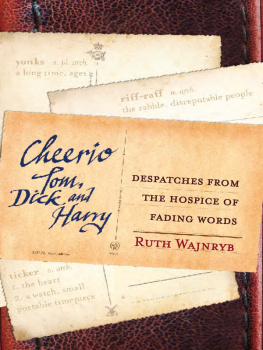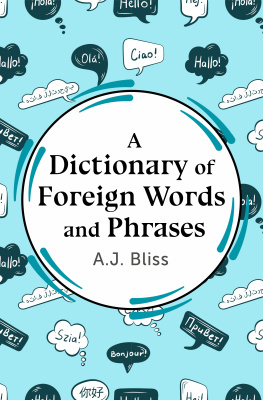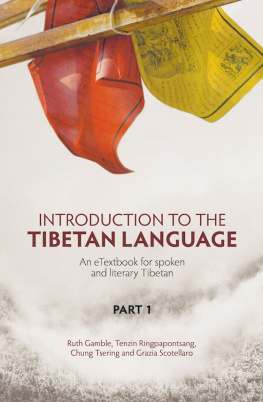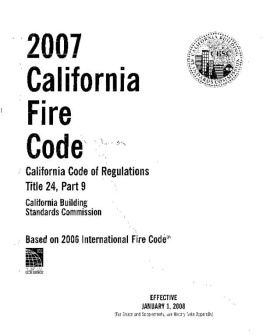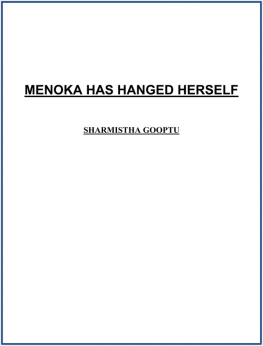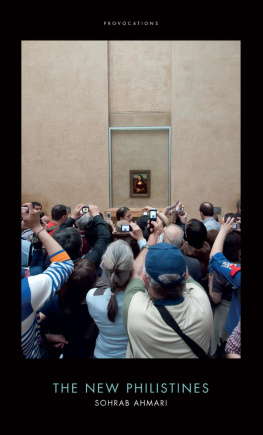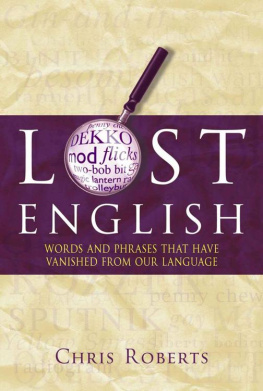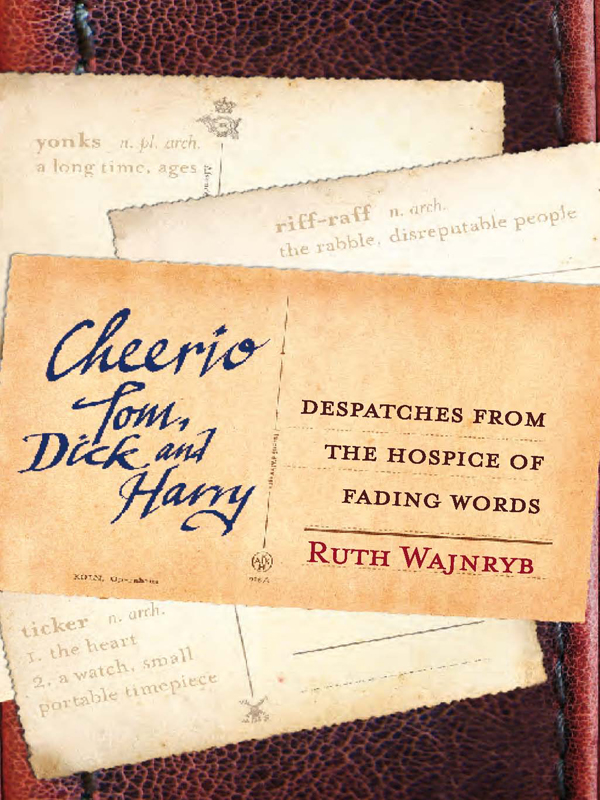
Cheerio
Tom, Dick and Harry
Cheerio
Tom, Dick and Harry
DESPATCHES FROM THE HOSPICE
OF FADING WORDS
RUTH WAJNRYB

First published in 2007
Copyright Ruth Wajnryb 2007
All rights reserved. No part of this book may be reproduced or transmitted in any form or by any means, electronic or mechanical, including photocopying, recording or by any information storage and retrieval system, without prior permission in writing from the publisher. The Australian Copyright Act 1968 (the Act) allows a maximum of one chapter or 10 per cent of this book, whichever is the greater, to be photocopied by any educational institution for its educational purposes provided that the educational institution (or body that administers it) has given a remuneration notice to Copyright Agency Limited (CAL) under the Act.
Allen & Unwin
83 Alexander Street
Crows Nest NSW 2065
Australia
Phone: (61 2) 8425 0100
Fax: (61 2) 9906 2218
Email: info@allenandunwin.com
Web: www.allenandunwin.com
National Library of Australia
Cataloguing-in-Publication entry:
Wajnryb, Ruth, 1948- .
Cheerio Tom, Dick and Harry : despatches from the hospice of fading words.
Bibliography.
ISBN 978 1 74114 993 7.
1. Linguistic change - Social aspects. 2. English language.
I. Title.
Internal design by Zo Sadokierski
Set in 10.5/14 pt Minion by Midland Typesetters, Australia
Printed in Australia by McPhersons Printing Group
10 9 8 7 6 5 4 3 2 1
This book is dedicated to the memory of
Dr Nicole Burman
CONTENTS
>> PART I
AS THE PACE QUICKENS
>> PART II
OLD WAYS, OLD LANGUAGE
>> PART III
QUAINTERIES ESCHEWED
>> PART IV
VICTIMS OF MODERN CANDOUR
>> PART V
A NEW CENTURY WITH ITS OWN SENSIBILITIES
>> PART VI
THE PAST IS DEAD, LONG LIVE THE FUTURE
I WANT TO THANK THE TEAM at Allen & UnwinRichard Walsh, Jo Paul, Catherine Milne, Catherine Taylor and Angela Handleywhose collective enthusiasm, optimism and support make writing such a pleasure.
It was Richard who came up with the notion of a hospice of fading words. This was an evolved creation, unfolding gently over time, not spontaneously in a moment of genius. And before the hospice was a hospice, it was a hospital. Before that, it was a cemetery, derived loosely from the Cemetery of Lost Books in Carlos Ruiz Safons novel of Barcelona, The Shadow of the Wind. But we realised that these disappearing words were in fact not sick, not at least in the sense in which people are when they go to hospital. But nor were they dead, or not yet. Certainly, they were cemetery-bound, but so are we all, ultimately. Out of these ruminations emerged the notion of hospicea penultimate resting place for words before they vanish into the ether of the archaic. The vignettes became despatches and the title, Cheerio Tom, Dickand Harry, offered some seminal examples of what the book was about.
Fellow writer Mark Cherry believed in the project and supported me throughout. His skill at visualising a work as accomplished rather than disjointed, along with his ability to make me laugh, account for a happy process and, I trust, a successful outcome.
I also want to thank all the people who sent me their words. Early in the project, I had feared that having come from a non-native-English-speaking home, my intuitions on fading words may not be trustworthy. I didnt know it then but I ended up calling happily on the intuitions of an army of willing informants from around Australia. Over a year ago, an article I wrote was published in The Sun Heralds Sunday Life magazine. In it I drew attention to my impression that much of the traditional language that the baby boomer generation learned from their parents was not being passed on to their own children. At the end of the article, I invited readers to write to me with their experience of words they used to hear but dont hear very much any more. Subsequently, I was inundated with responses, and while I tried to respond individually to all of them, I sometimes fear a few escaped acknowledgement.
In an early conception of the book I had imagined including all the words that were sent to me in the text of the work, and again as an index at the back. That was when I expected to develop a database of, say, 500 words. However, when the yield from my readers responses took the figure to over 5000, I knew Id have to rethink the book, making it more of a social history, informed by linguistic insights, rather than simply a collection of fading words. In sum, I was elated at the shared interest in language and, specifically, in these endangered words, as well as in the recent social history of Australia.
Ruth Wajnryb
Sydney
April 2007
1
The hospice
IN OUR THROWAWAY SOCIETY, where even the style of ones fridge door or office decor goes out of fashion, the concept of recycling is a big ask. Mostly we just throw away. I tried composting once and all the rats in the neighbourhood celebrated. In any case, it isnt hard to appreciateor even imagine a conspiracy theory if thats your thingthat there are strong vested interests in keeping consumerism vibrant, happening and growing by 10 per cent-plus annually. Material growth is, after all, a fetish that is premised on the throwaway habit. I recall as a teenager wondering why fashions, from skirt hems to jean colour, always seemed to overturn the previous seasons must-haves. That was before I saw the link between fashion, consumerism and capitalism. Once that link was established I could never again look at fashion without thinking of manipulation.
While recycling, for many, is nothing short of cultural revolution, there are precedents to not-throwing-out. Take antiques, for instance. Surely here part of the beauty one admires is that quality of keeping on keeping on. Surely some like to imagine, as I do, who once might have used and loved this beautiful table before I stumbled onto it. Im reminded of a book I once borrowed from the library for my daughter. It was the story of an old house, much like one you might find in the Rocks area of Sydney, told as a kind of biography from the houses perspective. The house remembers its former occupants, going back generation beyond generation to where it all started, with the penal settlement of Australia. The beauty of the story is akin to the beauty of antiques, mementos of the past that youre able to touch or hold in your hand. With todays faux-antiques, its the same, except that more has to happen in the imagination.
Old cars have a charm similar to that of recycled antiques. I dont mean old car as in jalopy, but rather old car as in vintagerestored and very expensive. Although driving a vintage car might seem a touch twee, some of the attraction, surely, lies in the fact that the car itself has been through a restorative process. When I see an old vintage car on the road, obviously headed towards some vintage car rally event, Im reminded of the dress-up historical enactments you encounter in the southern states of America, where local history clubs assiduously relive the battles of the Civil War and then, once all the ammunition (faux, I assume) has been spent, well, then they have a picnic. Its got to be good for mental healthbetter an outdoor communal get-together than a foreign war or expensive time on the therapists couch.
Next page
